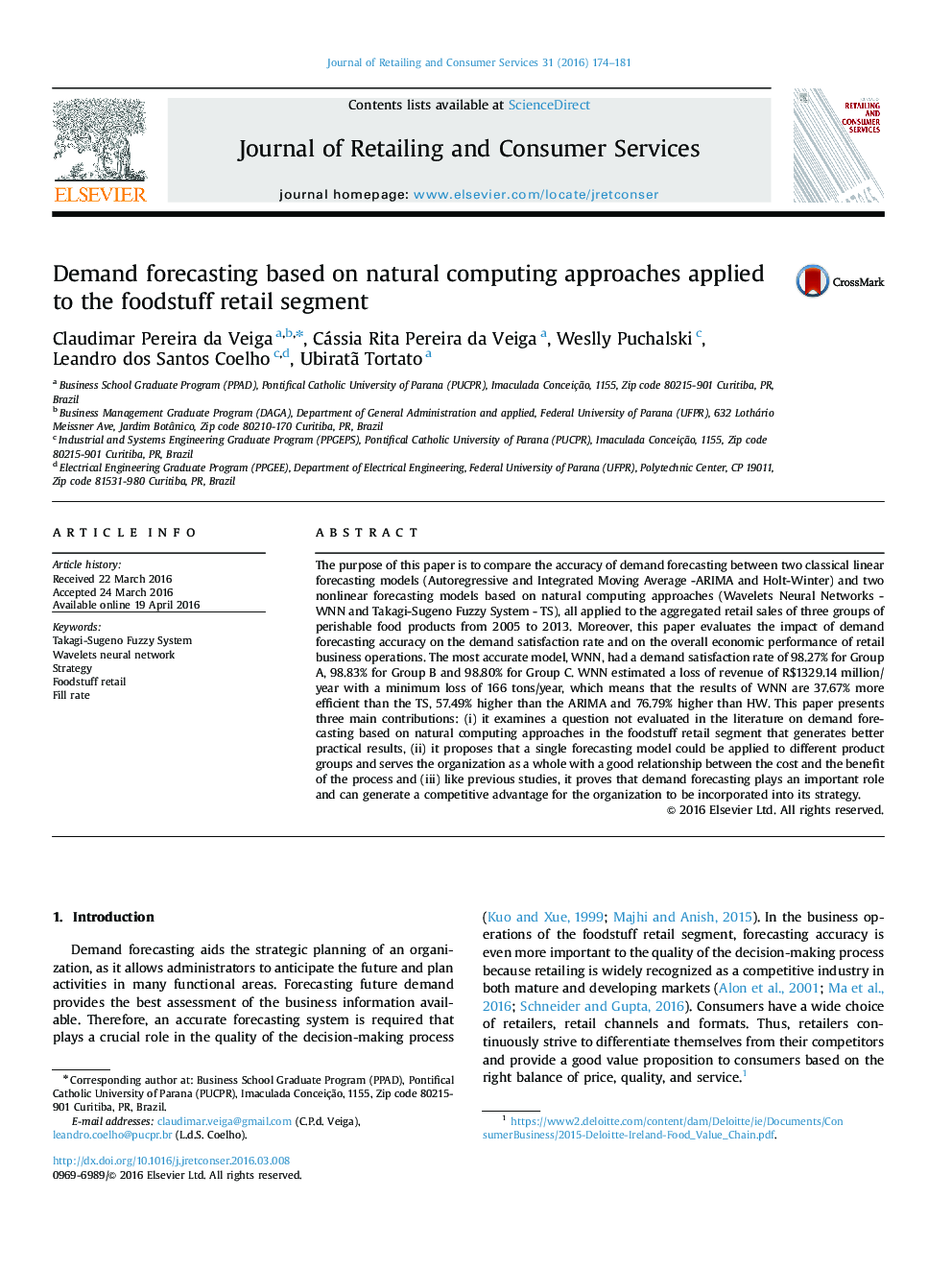| Article ID | Journal | Published Year | Pages | File Type |
|---|---|---|---|---|
| 1028749 | Journal of Retailing and Consumer Services | 2016 | 8 Pages |
The purpose of this paper is to compare the accuracy of demand forecasting between two classical linear forecasting models (Autoregressive and Integrated Moving Average -ARIMA and Holt-Winter) and two nonlinear forecasting models based on natural computing approaches (Wavelets Neural Networks - WNN and Takagi-Sugeno Fuzzy System - TS), all applied to the aggregated retail sales of three groups of perishable food products from 2005 to 2013. Moreover, this paper evaluates the impact of demand forecasting accuracy on the demand satisfaction rate and on the overall economic performance of retail business operations. The most accurate model, WNN, had a demand satisfaction rate of 98.27% for Group A, 98.83% for Group B and 98.80% for Group C. WNN estimated a loss of revenue of R$1329.14 million/year with a minimum loss of 166 tons/year, which means that the results of WNN are 37.67% more efficient than the TS, 57.49% higher than the ARIMA and 76.79% higher than HW. This paper presents three main contributions: (i) it examines a question not evaluated in the literature on demand forecasting based on natural computing approaches in the foodstuff retail segment that generates better practical results, (ii) it proposes that a single forecasting model could be applied to different product groups and serves the organization as a whole with a good relationship between the cost and the benefit of the process and (iii) like previous studies, it proves that demand forecasting plays an important role and can generate a competitive advantage for the organization to be incorporated into its strategy.
